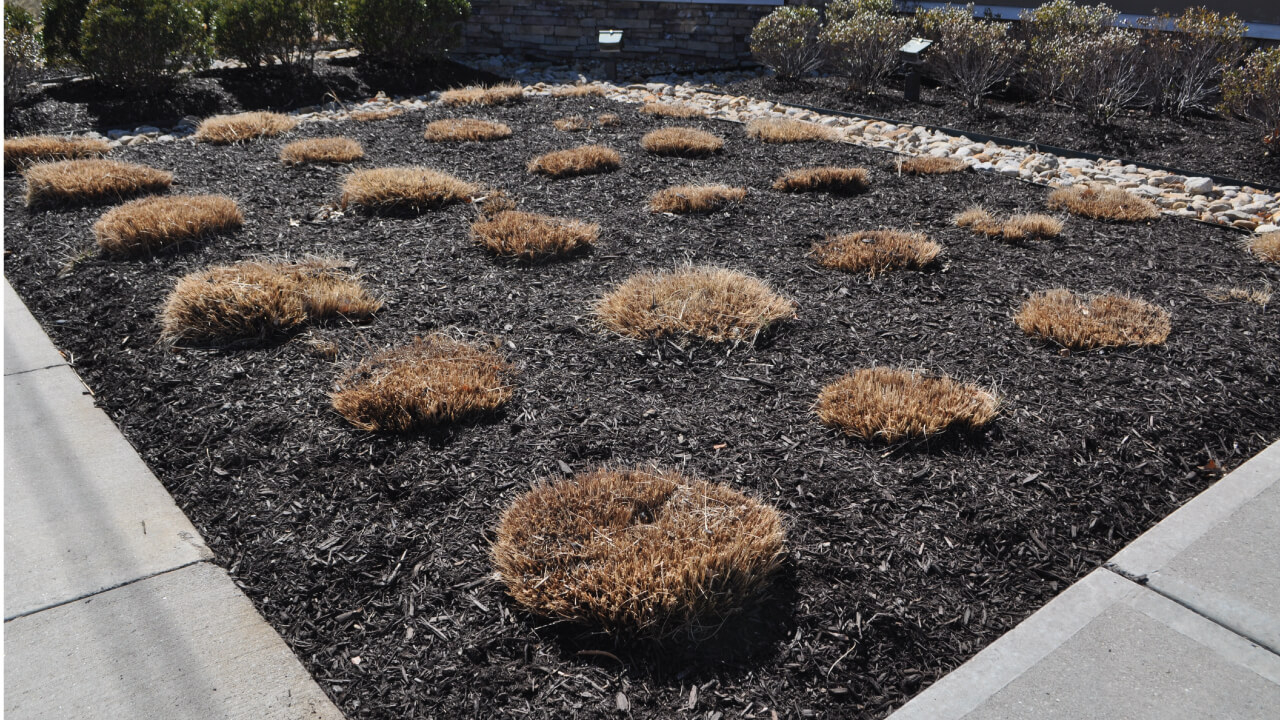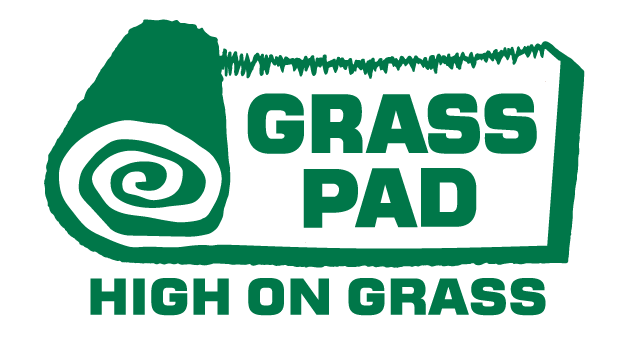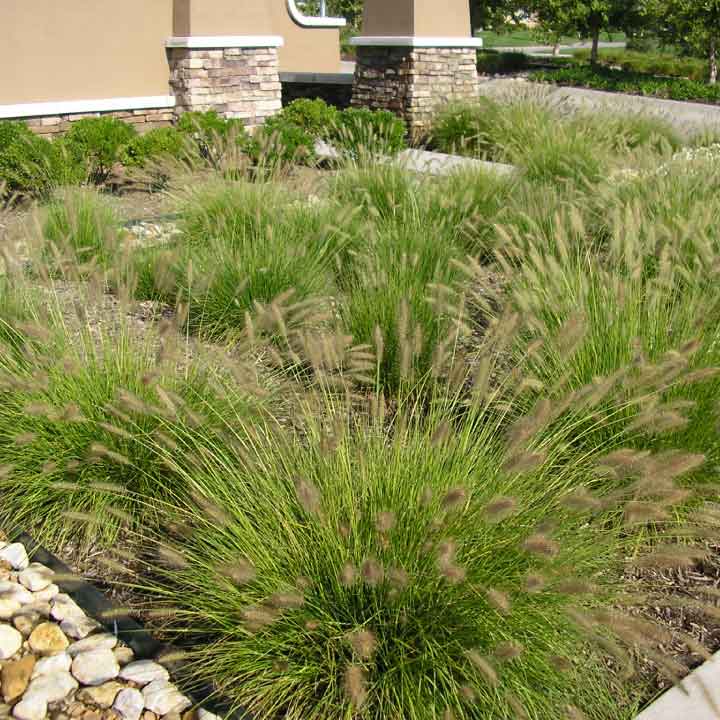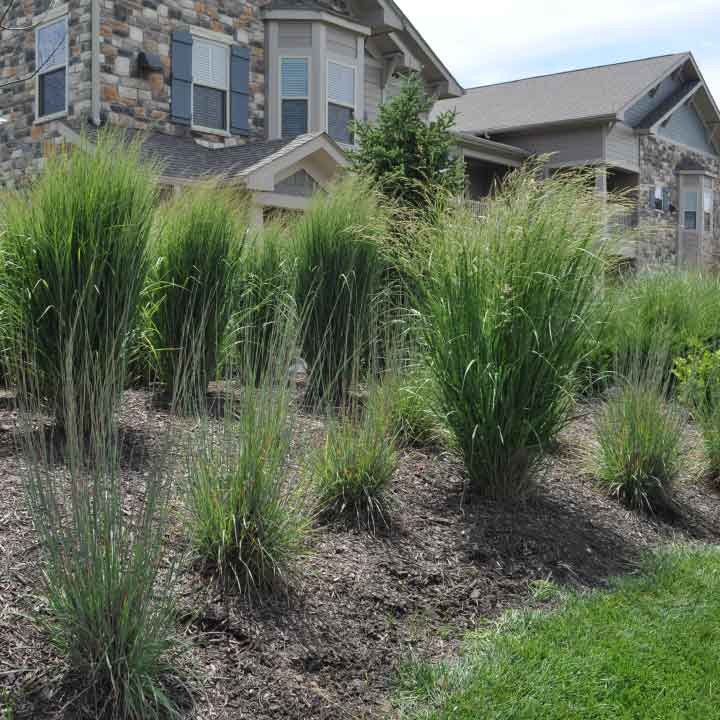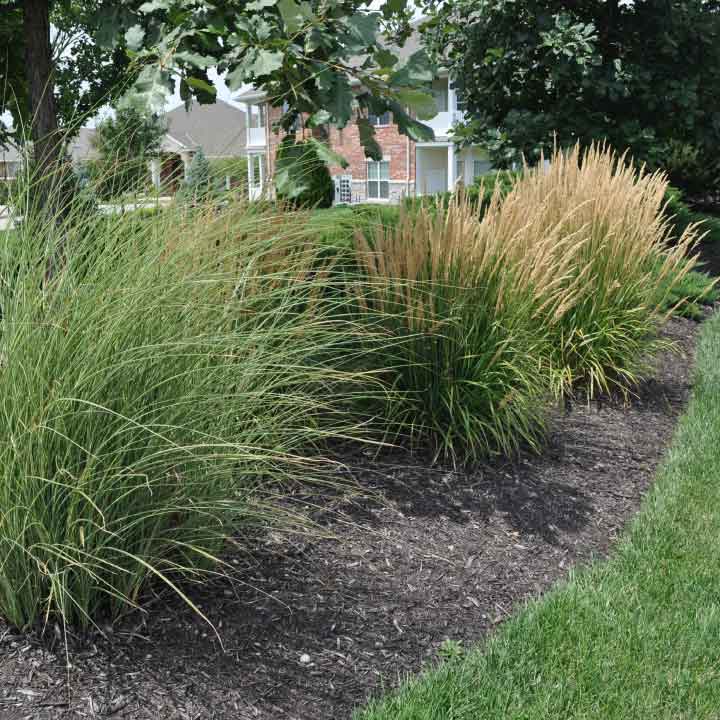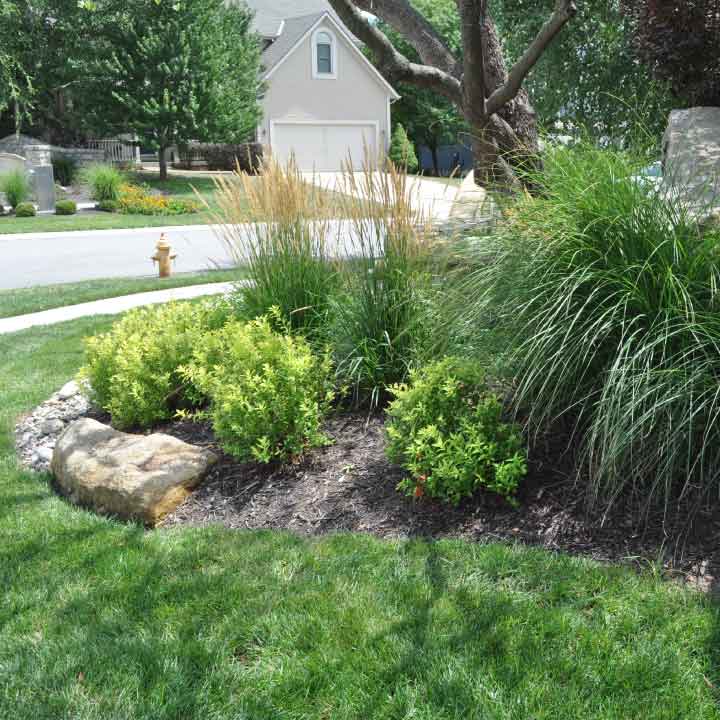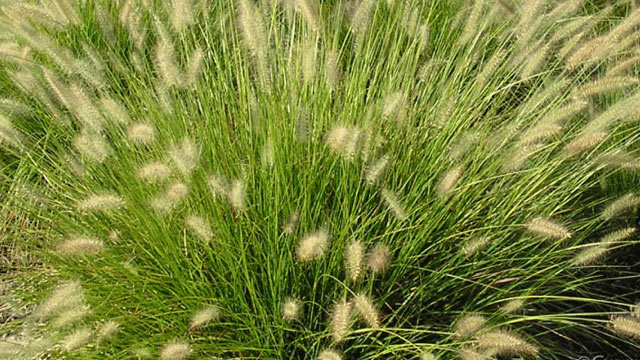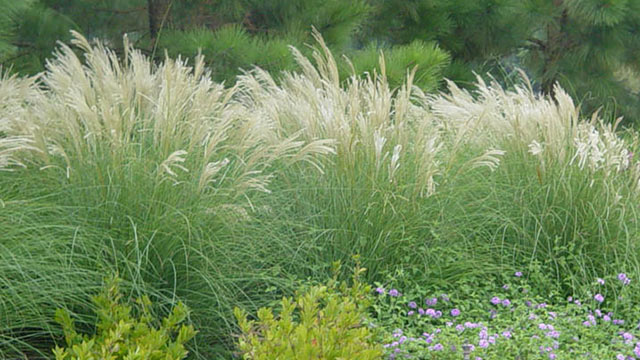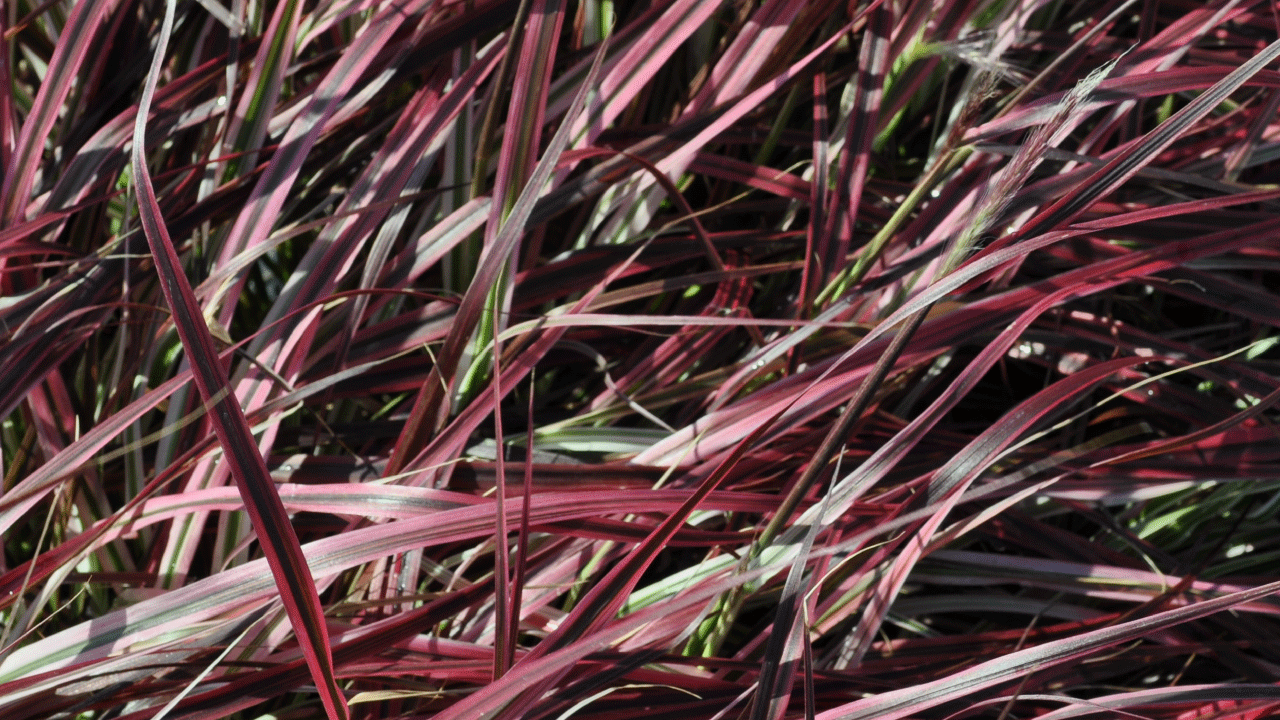Ornamental Grass Idiot Proof Landscaping
These days, foliage color and texture has become of greater importance in the landscape, container gardens, or in planters. We find ourselves ending up with the same handful of annuals, deciduous shrubs, evergreens, and perennials. We often overlook a plant family who can give us both color and texture; this plant family would be ornamental grasses.
Ornamental grasses hold a focal area in the landscape. Wanted for their foliage appearance; flower shoots (plume), texture, and winter interest. Foliage color among grasses can vary immensely, ranging from leaf colors of green, white, yellow, purple, orange and red tones to stripes, bands and numerous variegation combinations. Growth habits include mounding, spreading and uprights with heights ranging from 6 inches to 12 feet.
Common uses for ornamental grasses in the landscape are changes in texture and height, softening up vertical edges, and camouflage for your utility boxes and water meters. The texture of the grasses is typically used to contrast broadleaf plants and to soften up the landscape. Grasses are free flowing and help us break the uniformity of highly manicured landscaping, providing a more natural appeal. Grasses can be both eye catching as well as pleasing to the eye.
Plumes come up on stalks during the late part of the summer to the first part of the fall. The plumes, feather like in appearance, can range in color from white to cream, black, pink or even a purplish tinge to them. Plumes can vary in size and shape adding even more to a plant that already looks good and brings the total package to any landscape.
Hardy in most conditions ornamental grasses do well in sun, part sun, and some varieties even in the shade. They also do well in moist and even wet conditions making them great additions to rain gardens and bioswales There is practically no place in the landscape an ornamental grass could not fit.
Creating idiot proof winter interest or indoor décor. As the grasses go dormant in the fall, leave the plumes uncut. The results will be a beautiful outdoor feature to enjoy during the late fall and winter. Offering protection from harsh winter conditions, the upright grass blades, are spectacular when snow covered. In addition can, provide shelter for wildlife. For some inside décor, bundle the plumes up, cut them off at ground level and place them in a nice decorative pot inside your home as a show piece.
Considered low maintenance, ornamental grasses, will need to be cut back each year. Very forgiving, ornamental grasses can be cutback at any time from late December to early spring. Taller ornamental grasses must be cutback to allow new growth to rise from the center of the grass clump. Left uncut during spring growth cycle, the center stalks well be weak and underperforming from a lack of sunlight.
Rejuvenate your landscape adding low maintenance ornamental grasses that will reward you with color, texture, and the benefit of year long interest. Grass Pad nurseries stock the largest selection of hardy and decorative annual varieties of ornamental grasses. Bring your catalogs and compare. Buy local and save money at Grass Pad.
Best Ornamental Grass for Landscapes
Uncle’s Elite Eight Ornamental Grasses
Dwarf Hameln Grass
Slender green leaves and tan, wooly, caterpillar-like blooms from mid-summer through autumn. Drought tolerant. Foliage height is 2′ with blooms 3′.
Maiden Grass
A tall, graceful, and clumping ornamental grass with slender, weeping, and silvery green leaves that turn golden bronze in fall. White, fan-shaped plumes in fall extend above the foliage. Foliage height is 5′ with blooms 7′.
Porcupine Grass
Green leaves with yellow colored horizontal bands make the ornamental grass stand out. Fast growing 6′-7′ tall. Silvery white plumes rise 2′ above the foliage in fall.
Karl Foerster Feather Reed Grass
Beautiful cool season grass with an upright growth habit. Flowers in late spring starting as bright pink to red and fading to buff. Thrives in poor soils. Foliage height 2.5′ to 3.5′ with blooms to 6′.
Shenandoah Switch Grass
Bright red foliage deepens to burgundy by fall. Blooms begin in color, up by early June. A good substitute for Japanese Blood Grass. Foliage height is 2′ to 3′ with 4′ blooms.
Japanese Silver Grass
A creamy-white variegated grass, Reddish-brown feathery seed heads turn to white plumes and contribute to the striking appearance of this grass. Matures at 6′ to 8′ tall and 4′ to 5′ wide. An excellent alternative to Pampas Grass.
Hardy Pampas Grass
Hardy Pampas Grass is a winter-hardy variety of Pampas Grass. Saccharum ravennae ‘Erianthus’ grows to about 5-8 feet and then sends up airy, white plumes that can reach up to 10 feet tall. One of the most popular ornamental grasses, superb as an architectural specimen or broad accent. The foliage has a clumping habit; plant in groups to create a screen or windbreak.
Prairie Blues Bluestem
A selection of Bluestem with gray-blue foliage turning to an orange-red fall color. Produces purplish-bronze fall flowers that age to silvery white. Has an upright growth habit and matures at 3 to 4 feet tall and 1.5’ to 2’ wide.
Annual Purple Fountain Grass
Not Hardy in Mid-West but this one deserves an honorable mention. Working in landscapes as an annual or in containers this is a great plant. Narrow, gracefully arching, burgundy-purple leaves. Foliage height is 3′ with blooms to 4′.
Pruning Ornamental Grasses
Prune anytime after the leaves turn brown, as long as you cut them back before they start growing again in spring. Avoid cutting fresh new growth tips.
Uncle’s Tip: Start by wrapping a piece of twine around the outside of the grass and tie the foliage into a tight bunch. This way, the grass will stay bundled as you prune and not explode into pieces everywhere. After your grass is tied up, use handheld or powered hedging shears to cut the dead grass leaves. If you’re using powered hedging shears, it’s helpful to have a friend hold up the grass, so it doesn’t fall on you as you cut. Just be careful not to trim anyone’s fingers!
